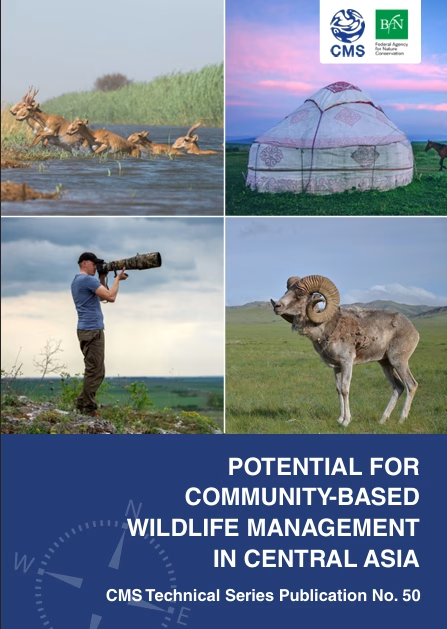Potential for Community-based Wildlife Management in Central Asia
Community-based wildlife management (CBWM) – also referred to as Community-Based Natural Resources Management (CBNRM) describes the management of wild living resources – including terrestrial and aquatic wildlife, their habitats and related resources – by collective, local institutions for local benefit. A variety of other terms are used throughout literature to describe the same concept. The main objective of CBWM is to create, through a bottom-up, participatory approach, conditions allowing a maximum number of local people to benefit from a sustainable management and utilization of wildlife and its habitat. The approach intends to change people's behaviours and attitudes and in doing so to achieve defined conservation goals. Implementation of CBWM usually means granting the right to manage wildlife in a certain area to local communities, and this often includes land use rights. Thereby communities can decide for themselves about hunting and/or use of wildlife habitat and about spending possible resulting revenues, e.g. on social projects. In cases when these benefits outweigh the costs of wildlife presence on their lands (e.g. arising from conservation measures or crop losses related to the presence of wildlife), significant conservation benefits can be achieved even for rare species. Empowering local people to sustainably manage wildlife populations so that they become an asset to their livelihoods has contributed to a reduction of poaching and better conservation of the managed species, as documented in case studies from around the world. The goal of this study is to assess the potential for applying CBWM for improving the conservation of selected species of mammals in Central Asia, listed on the Appendices of the Convention on the Conservation of Migratory Species of Wild Animals (CMS). To date only a few examples of CBWM exist in Central Asia. Parties to CMS, and Range States of the CMS’ Central Asian Mammals Initiative (CAMI), including the target countries of this study, adopted the Programme of Work for the initiative for 2021-2026 (CAMI POW), which includes several activities aiming at promoting implementation of CBWM in the Central Asian region. For this purpose, four species covered under CAMI have been selected and options for CBWM approaches evaluated in terms of their feasibility. Finally, policy recommendations to support the successful application of these approaches by national Governments and other stakeholders in the region are provided.
